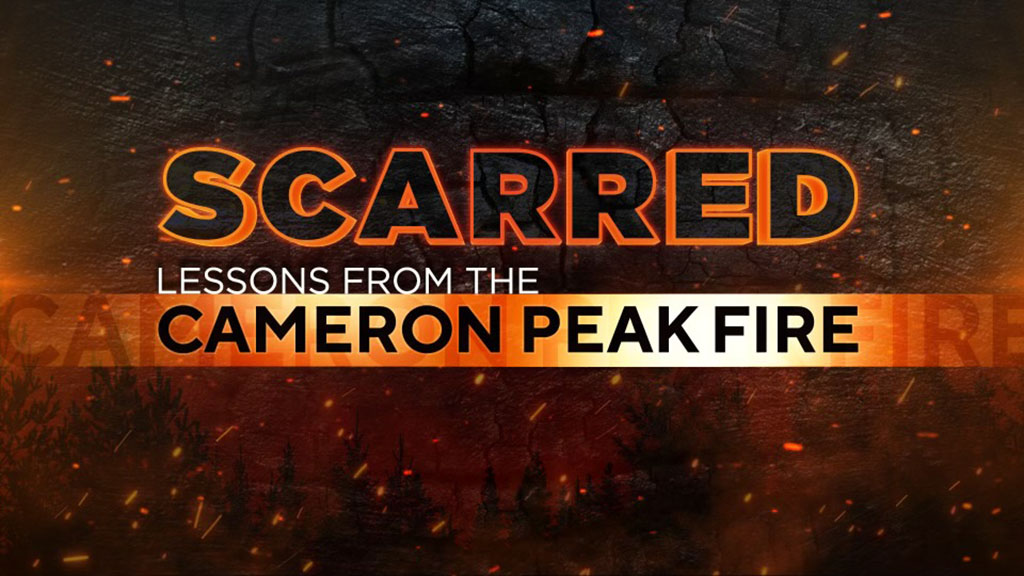
When the credits roll after the Oct. 22 CBS4 documentary “Scarred: Lessons from the Cameron Peak Fire,” they list Colorado State University graduate Dillon Thomas as host, reporter, photographer and editor.
“I spent countless hours over nearly a four-month period documenting what would become (the program),” Thomas said. “Much of the project was shot on my days off, quite literally scaling the very land most significantly impacted by the blaze, carrying dozens of pounds of video and audio equipment on my back. Thanks to CSU, local governments and the U.S. Forest Service, I was given access to parts of the burn scar which, to this day, still are not open to the general public.”
An Aurora native, the 2014 CSU graduate earned a bachelor’s degree in journalism and technical communication, plus a minor in political science.
After a two-year position at a television station in Arkansas, Thomas returned in 2016 to Denver to work at CBS4, where he interned during college. Thomas said that he’s the only Denver TV reporter to live in Northern Colorado, so the Cameron Peak fire hit close to home.
“At nighttime you could stand in eastern Fort Collins near I-25 and see the flames crawling toward Horsetooth Reservoir,” Thomas said. “We were in the middle of a pandemic, and people were at times more concerned about the air quality outside than they were indoors.
“All of Northern Colorado was sheeted by a thick red plume, and ash was falling from the sky like snow for months. Each day I take a daily walk, and during the fire I would always stop at one vantage point and just stare in awe at the plume. It was a crisis you couldn’t ignore.”
In a Q&A edited for length and clarity, Thomas discussed his post-CSU life and what he will take from the nearly 25-minute documentary about a fire that likely will affect northern Colorado’s ecosystem for a decade.
Question: Where did you grow up, why did you attend CSU and how did it prepare you for your career?
Answer:
I grew up just outside of Denver in Aurora, Colorado. I once thought I was going to become a commercial airline pilot. But one day, one of my teachers at Smoky Hill High School took note of my interest in photography. She was also the supervisor of the journalism publications at the school. By sophomore year, I was a member of the yearbook program and by senior year was shadowing CSU grad and CBS4 Denver main anchor Jim Benemann. I knew, right then, that I wanted to become a TV journalist. Both he, and my sister who was already at CSU, suggested I apply to school in Fort Collins. I was accepted upon application and started volunteering in student media within weeks of moving to campus. I spent four years serving as both an anchor and manager for the campus TV station. And, I interned at CBS4. Between professors in the journalism department and hands-on learning experience at CTV11, both myself and my fellow graduates were entering the TV news industry leaps ahead of those from other programs and schools.
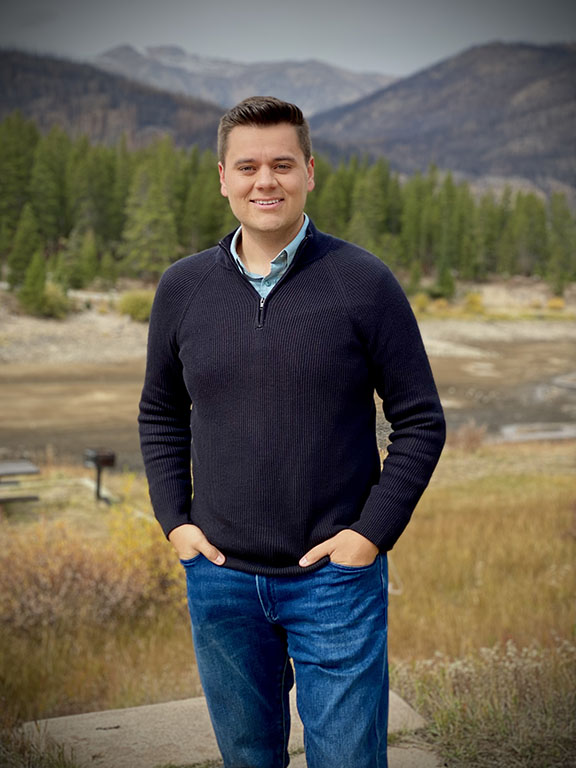
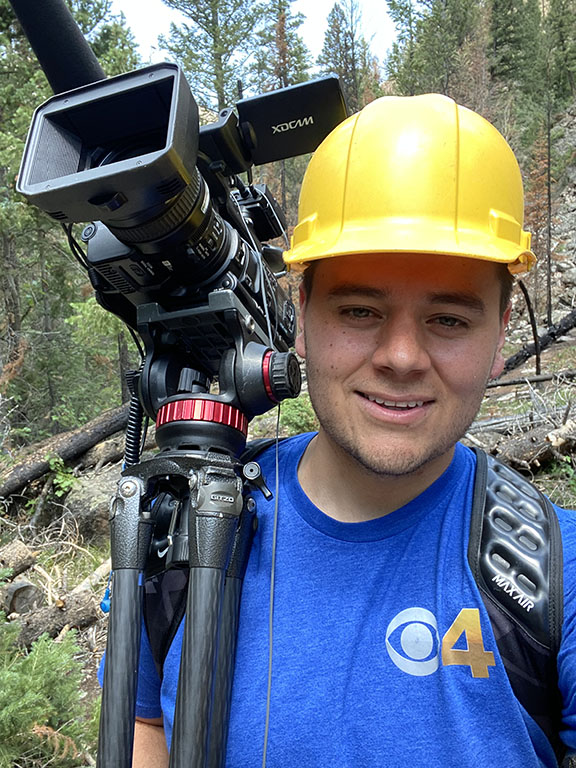
Question: What’s your job at CBS4?
Answer:
I am a multi-skilled journalist, meaning I not only pitch stories, but I also shoot, edit and run my own live shots for all my stories you see on CBS4. I have chosen to call Northern Colorado home. So, while I’m not officially a “Northern Colorado Bureau Reporter,” my love for the region is clear in my reporting.
Question: What have been your favorite stories to cover?
Answer:
In this business you get the chance to meet a lot of incredible people, and see many incredible things. From the best in life to the lowest of lows, it’s my job to document history. I’ve had the chance to speak with three U.S. presidents, work in the White House, and even spent time covering the Denver Nuggets. But, at the same time I would say my favorite stories are the ones that impact Coloradans the most. The stories of perseverance from adversity, and tales of communities coming together to help each other.
Question: How did you report about the largest fire in Colorado history?
Answer:
I spent time talking with countless people about how the blaze impacted them at that moment. From business owners to evacuated residents and even those who rely on the resources that region provides … Everyone had concerns. In June of 2021, more than six months after the fire went out, I found myself once again at the vantage point I used to watch the plume from. I randomly had a thought … sure, the fire is out. But, surely the impacts of the scarred landscape are still looming. The word “scarred” stuck with me as I stood there and looked west. The landscape was scarred, people were scarred, wildlife was scarred. I wondered how deep those scars were, and how long they would show. I went home, typed my ideas and questions into an email and sent it to my boss, Tim Wieland.
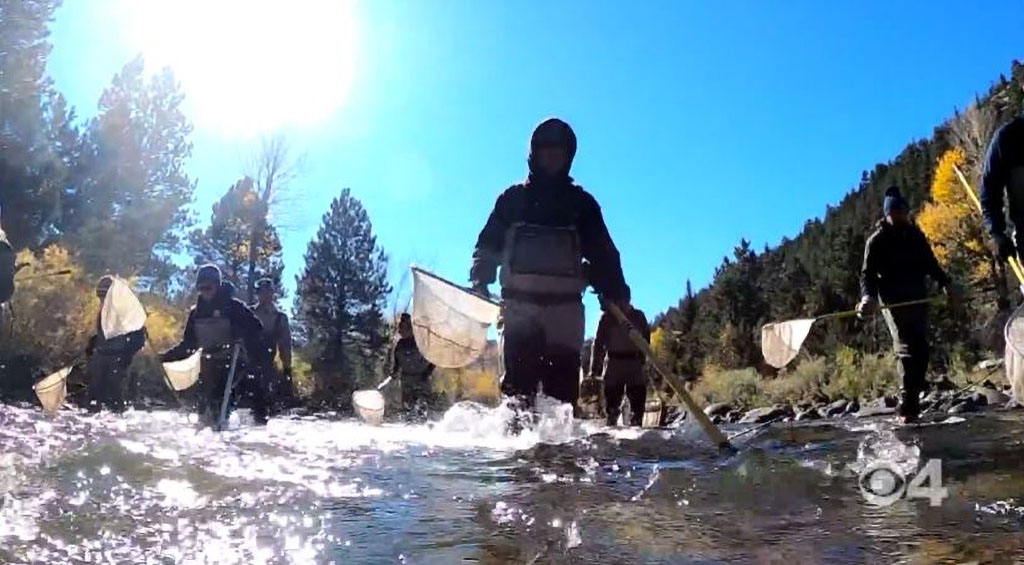
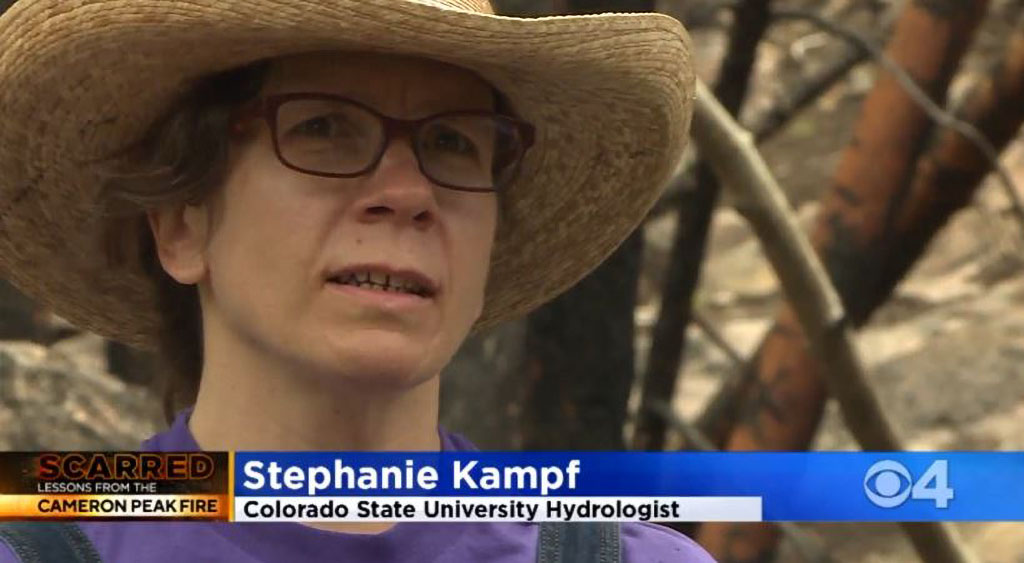

Question: How long will the fire influence the region?
Answer:
So many people were directly impacted by the historic fire. Some lost property, others lost businesses and beloved hiking trails. But, one could argue the fire had an even greater lasting impact on those outside of the 208,000-acre scar. Millions of people are now facing a decade or more of water quality issues. Local outdoor businesses aren’t guaranteed customers due to faulty landscapes. The fire may have burned out, but the impacts it will have on the region for years to come is of great concern. The story of the Cameron Peak Fire’s impacts will long outlast the flames themselves.
Question: What other CSU connection was there to this documentary?
Answer:
Stephanie Kampf, Hydrologist at CSU, took our cameras up into the burn scar where her team is monitoring the impacts the fire has had on water flow and quality. As she noted, the grasses and shrubs serve as a natural sponge and filter for the snowmelt and rain which ultimately flow into rivers like the Poudre River and the Big Thompson River. Those are the two primary water sources for millions of people in Colorado. Her studies have shown that the soil is failing to absorb the water as well as it did before. Ultimately that means greater concern for landslides, flooding and extreme levels of sediment in the watershed. If the ground can’t properly absorb the water, the canyons are in jeopardy of many different problems. And, we saw that this past July after landslides killed four people, killed thousands of fish and even forced cities to cut off their water intakes. The environmental issues following the Cameron Peak Fire have proven more deadly than the blaze itself.
Question: What is your advice for those thinking about CSU and those also in your major?
Answer:
One of the greatest keys to being a successful journalist, on-air or not, is establishing and maintaining genuine relationships with as many people as you can. I shadowed at CBS4 in high school because I established a relationship with fellow-Ram Jim Benemann. I interned at CBS4 because I maintained that relationship. I was hired at CBS4 at the young age of 24 because I formed more relationships during my time at CBS4 in previous years, and kept those. Those same skills can be applied to stories. This documentary wouldn’t have been possible without having the connections and relationships rooted years ago in Northern Colorado. Pay attention to the work being done by the people you encounter. Hear their stories and always keep them in mind. There are countless amazing stories going on every day that are waiting to be told.
“The word ‘scarred’ stuck with me as I stood there and looked west. The landscape was scarred, people were scarred, wildlife was scarred. I wondered how deep those scars were, and how long they would show.”
Dillon Thomas